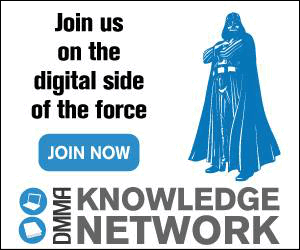By Gerhard Sagat, Strategic Planning Director, Euro RSCG South Africa
For much of the 20th century, product-centricity was the driving force behind a company’s operations, marketing and sales. But the limitations of this approach soon became apparent as we approached and entered the 21st century. Globalisation, increased competition and the standardisation of products meant companies placed too much importance on product intrinsics and performance, and lost touch with the fact that a product is a simply just a means to an end. To create a sustainable competitive advantage, companies began to look more closely at the markets – the people – that they were trying to serve.
And so was born the customer-centric business; the marketing-orientated organisation. The customers’ needs, experience and voice became the new driving force behind business, with the belief that an organisation’s reason for being is the satisfaction of that need. The most successful companies would be those that have a more appropriate value proposition for their customers, provide a better customer experience and have a deeper, more intimate understanding of their customers.
Accompanying this new philosophy in commercialism is the term “consumer insight” (or sometimes merely called “insight”), which is fast on its way in becoming another ambiguous fluffy marketing buzzword, to reside securely alongside the “synergy” and “viral” repartee of modern business. Yet many lack a true understanding or definition of what a consumer insight really is and how to best uncover one.
So let’s end the unreasonable argument of what determines a consumer insight by defining what it is not: it’s not a product or service you are trying to sell; it’s not what you test in research groups; it’s not what your consumer tells you; it cannot be quantified, measured or deemed as rational; it will never be told to you; it’s the unspoken truth and motivation based on a mix of anxieties and hopes that is never said or admitted, but yet peculiarly unites and bonds your audience.
A true consumer insight is plainly the deep, emotional connection your brand has with your consumer. And you know that you found a good one when you get that “of course, it’s so obvious” intuitive realisation.
The myth that consumer insights can be revealed in focus groups or interviews alone is as myopic as the notion of product-centricity. Research operates on the principles of science: observation, hypothesis, prediction and testing. Unearthing consumer insights operate in a different way as consumer insights don’t come solely from one place. It’s quite like building a puzzle, from data analysis to intuition, from observation to customer immersion, even down to the real life experience of the marketer or planner. Although data is the unequivocal anchor, it will only get you a certain percentage of the way, it is its combination with emotional intelligence that takes you over the threshold that leads to the uncovering a true consumer insight.
However, adjacent to ‘true consumer insights’ sits another set of marketing-related insights that have seemingly being categorised into the same box, yet their function and essence is quite different to that of their next of kin. These can take form as a product insight, purchase insight, cultural insight, brand insight, usage insight, future insight or a market insight to name just a few. These various “insights” are equal to but serve a different communication function to that of the ‘consumer insight’, all of which are applicable to consumers but serve a different communication solution. In the market of consumer-centricity, the myth needs to be clearly dispelled that ‘true’ consumer insights are not the one-size-fits-all only solution to all marketing objectives or communication tasks.
Take for example the recent award-winning Hunters Dry campaign. The communication is based on an obvious category insight, postured on the central idea of people wanting ‘refreshment’ from an alcoholic beverage. This is a vastly different approach to communication to say, the Oreo cookies advert, which told the world to eat the middle first and save the chocolate cookie outside for last. The campaign line wasn’t quite the actual consumer insight, but rather it was based on the true consumer insight that children love what they instinctually discover for themselves: this is simply the best way to eat an Oreo. The clever part is that millions of Oreo eaters still they think they came up with the idea first. They love the advert because it reminds them of their apparent genius in their youth. A classic example of a cultural insight centred on masculinity is the relationship men have with food; particularly meat, which is used profusely in fast food advertising such as Steers.
The concept of insights is surrounded with much perplexity, frustration and misguided expectations due to its various forms, applicability in usage and correct definition, coupled with the difficulty in unearthing a true and meaningful consumer insight. When considering our communications we need to be carefully cognisant of what type of insight is needed to suit our marketing objective as to determine whether a ‘true consumer insight’ is applicable or not.
Hopefully, we can now end the argument of “that’s not a consumer insight” and turn it into a dialogue that poses the question as to “what insight is most suitable for our communication objectives”.
















Enjoyed this thought provoking opinion from Gerhard and agree. The only departure is that advertising agencies need a focused,simple positioning insight to rally around and produce single minded work that makes sense to the customer. But invariably the depth of the conversation,relationship and true reasons for a brand/customer partnership are often misguided in the end result.